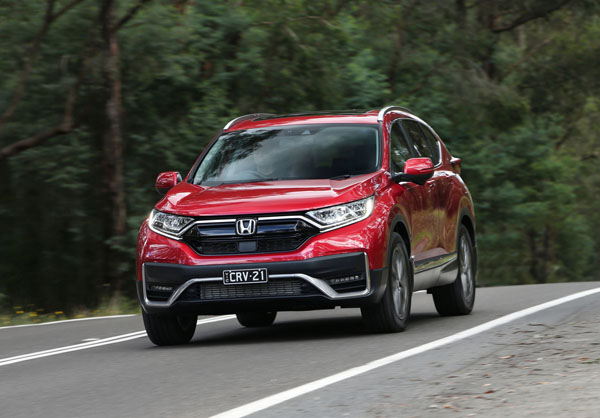
When the Honda CR-V was introduced in 1997 it was a genuine 4WD. But these days most buyers are looking for a trendy SUV that’s used as a station wagon and is frequently driven by two wheels not four, and has a relatively low ground clearance.
The CR-V’s body is car-like in its construction but is beefed up with a reasonably strong underframe. It’s no bush basher though.
The CR-V Series 3 was launched in 2007 with lowered ride height and more sophisticated ride and handling.
The Series 4 cars from October 2012 continued the theme and are surprisingly upmarket for their class. We are covering from 2012 onwards in this week’s Used Car Checkout.
All CR-Vs are five-door station wagons with seating for five in most, although there’s also a seven-seater with two extra seats in the rear in the gen-five models. These are tagged the Civic CRV-L.
The width of the second-row seat is more suited to two adults than three. There’s quite good legroom in the back seats thanks to the tall styling. The third row is best left to the kids – and they love it back there as they’re further from Mum and Dad.
Boot space is good and, as is the norm in this class, the rear seatbacks fold for added load space.
Ride comfort of the Honda CR-V is good and handling is adequate and safe rather than exciting. They really do make excellent family wagons and we know of many owners who love nothing more than to stuff the kids and the luggage into the back and set off on interesting country drives.
Honda CR-Vs have four-cylinder engines. There’s a 2.0-litre unit in the two-wheel-drive models and 2.4-litre if all four wheels are driven. Though a manual gearbox was offered in the most basic CR-V models almost all Australian imports have automatic transmissions. The manuals may become a bit of an orphan and drop in value down the track.
Spare parts for SUVs are sometimes more expensive than for cars but not outrageously so. Availability can be a problem as not many country dealers carry all parts for every model. However, the Honda’s dealer network is long established and efficient and can usually get parts sent to them within a couple of days.
Insurance rates are normally in the middle of the scale and don’t seem to vary a great deal from one company to another.
Buy a Honda CR-V for what it is – a suburban runaround car that can go onto forest trails or trips along beaches. It’s certainly not intended for serious bush bashing so shouldn’t be subjected to that sort of use.
WHAT TO LOOK FOR
Looking at a Honda CR-V that’s never been off-road? Smart move, but keep in mind that carting kids can be just as hard on off-road vehicles as taking them into the bush, so don’t skimp on paying for a professional inspection.
If you think a CR-V has spent a day on a beach do a full inspection of the underbody and bumper corners and mounts. Also check for sand and salt in the crevices, the latter could lead to severe rust.
Look over the cabin for signs of rough treatment, especially in the back, such as footmarks on the seats and damaged carpet or trim.
Check the engine starts promptly, runs smoothly and doesn’t blow smoke from the exhaust.
Keep an eye on the touchscreen while you’re test driving the car, some tend to flicker and may even turn off altogether.
HOW MUCH?
Prices should be around $8000 to $12,000 for a 2012 Honda CR-V VTi; $10,000 to $15,000 for a 2013 VTi; $13,000 to $19,000 for a 2013 VT-L; $16,000 to $22,000 for a 2015 DTi-S or a 2017 Limited Edition; $18,000 to $25,000 for a 2015 VTi-L; $23,000 to $31,000 for a 2013 VTi-LX or a 2019 VTi-S; $25,000 to $34,000 for a 2018 VTi-LX; and $30,000 to $41,000 for a 2020 VTi-L.
CAR BUYING TIP
SUVs that have been off-road in serious country are quite rare. If you find one that has been treated like that either find another one, or ask for a serious discount on price.
RECALLS: To browse recalls on all vehicles go to the ACCC at: www.productsafety.gov.au/products/transport/cars/